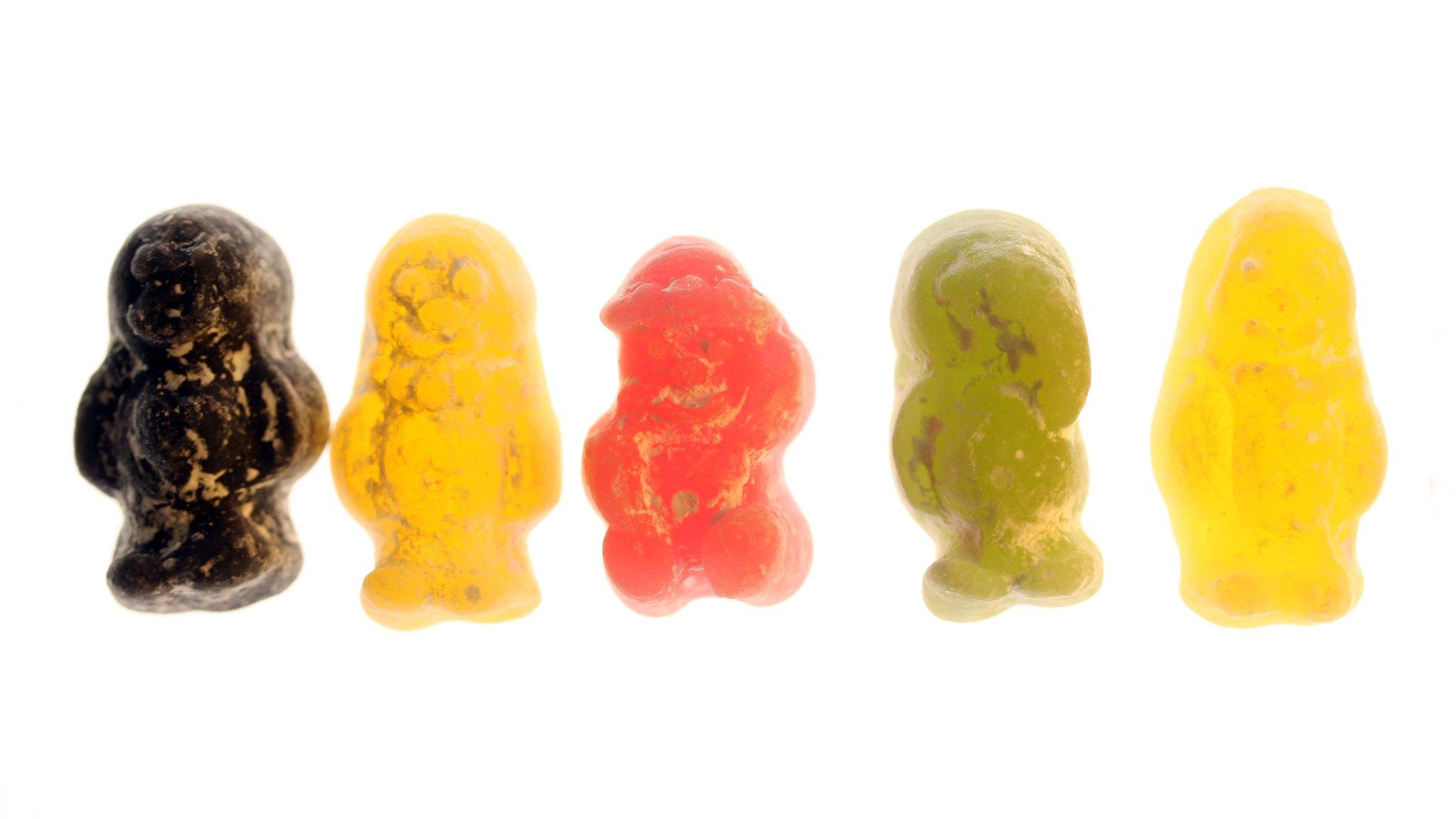Sweet success: Unravelling the Jelly Baby's dark past
- Published

Bassett's of Sheffield were responsible for mass-producing the much-loved Jelly Baby from 1918
The humble jelly baby has been giving fans a sugary thrill for generations, but the apparently innocuous treat harbours a somewhat dark and mysterious past. BBC News takes a look at its journey from a Lancashire sweet factory to mass-produced giant of the confectionery world.
As you pinch the last Jelly Baby out of the bag and sink your teeth into its plump little body, have you ever stopped to wonder if there's a method to your mastication madness?
Do you, for instance, nibble away at its arms and legs until you are left with a helpless torso? Or are you the ruthless type that goes straight for the kill and chops off its head, Henry VIII-style?
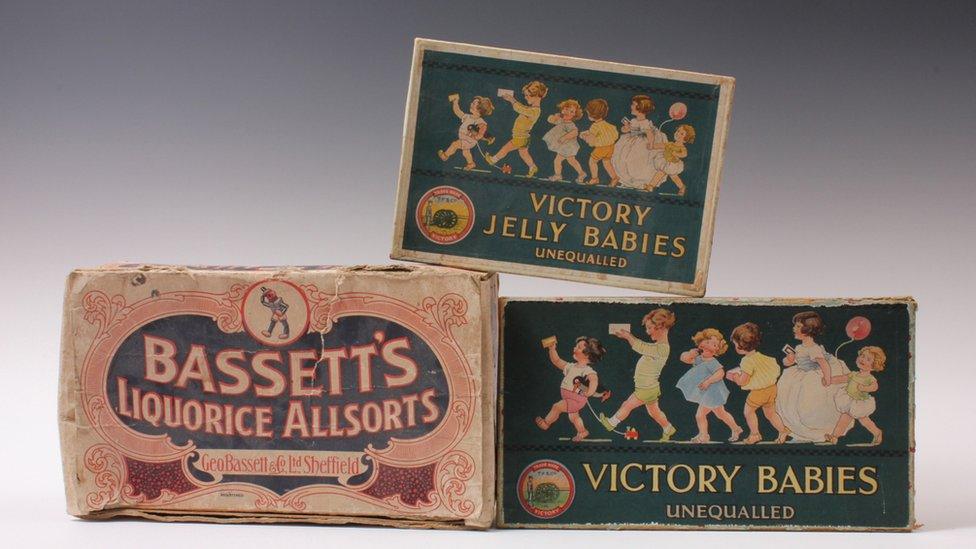
Old packaging for Victory Jelly Babies went under the hammer at Bamfords Auctioneers in 2011
The process by which you eat these innocent-sounding sweets has probably never occurred to you, least of all struck you as bordering on the macabre.
But this act of pseudo-cannibalism isn't the only disturbing chapter in the history of the much-loved jelly baby.
Confectionery historians believe the earliest jelly baby was the work of an Austrian confectioner who worked for Fryers of Lancashire.
It is thought that in 1864 he was asked to make a mould for jelly bears, but the resulting sweets looked more like newborn infants and were subsequently given the ghoulish name, Unclaimed Babies.
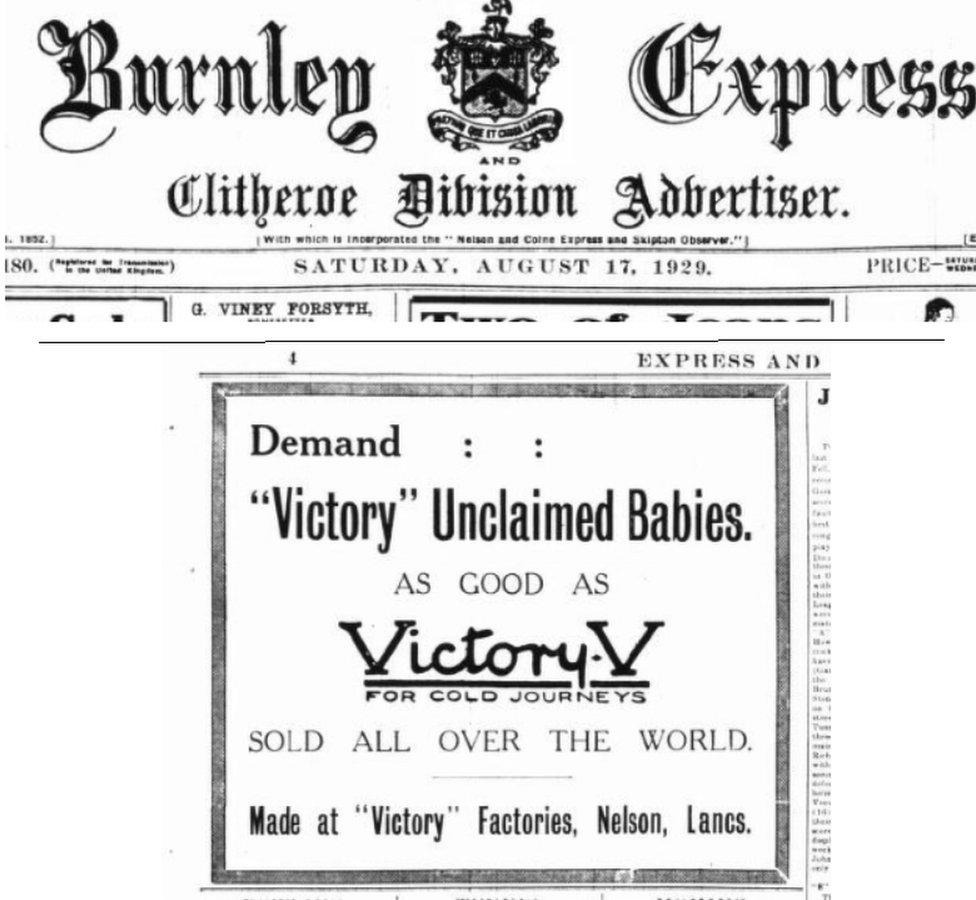
Tim Richardson, author of Sweets: A History Of Temptation, said although the name might sound ghastly to modern ears, sweet-eaters in the Victorian era would barely have batted an eyelid.
"Unclaimed babies were a part of life back then - people would leave them on church steps and it's possible that people even found the name amusing," he said.
"The sweets were sold loose and the jars they were in wouldn't have been labelled [or] branded, so people would have said, 'Can I have some of those jellied babies?'.
"It is an example of one the most down-to-earth, mass-produced sweets which came along in the 19th Century."
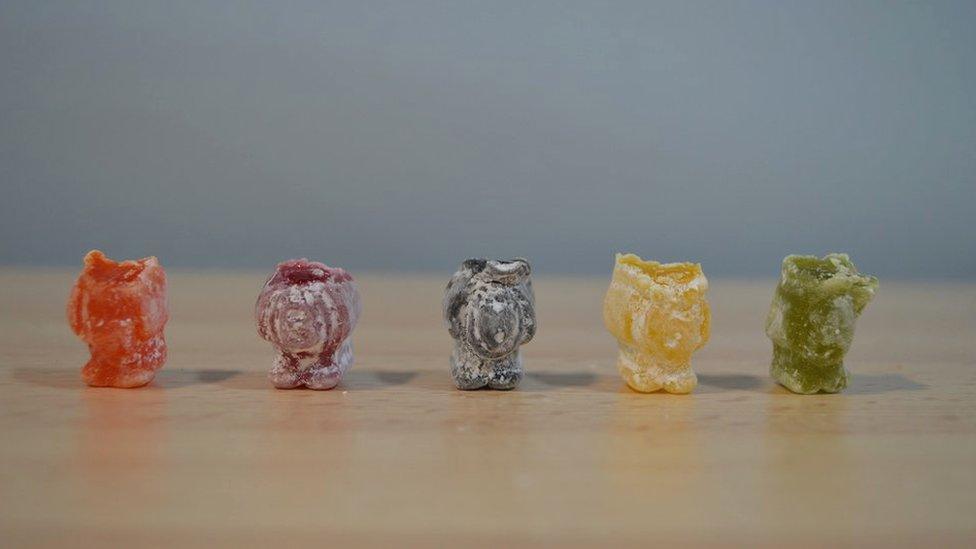
Do you nibble off the head or the arms and feet?
There are a number of references in newspapers and adverts at the time that corroborate the theory behind the odd name.
An article that appeared in the Nelson Ledger in 1924 makes mention of Unclaimed Babies, albeit using language that would be considered shocking by today's standards, while another in the Burnley Express refers to it as the sweet in the "greatest demand".
Confectioners' advertisements from the late Victorian era also list various baby-shaped candies as "dollies", "totties", and in at least one case, "unclaimed babies", said Glyn Hughes, editor of the Foods of England website.
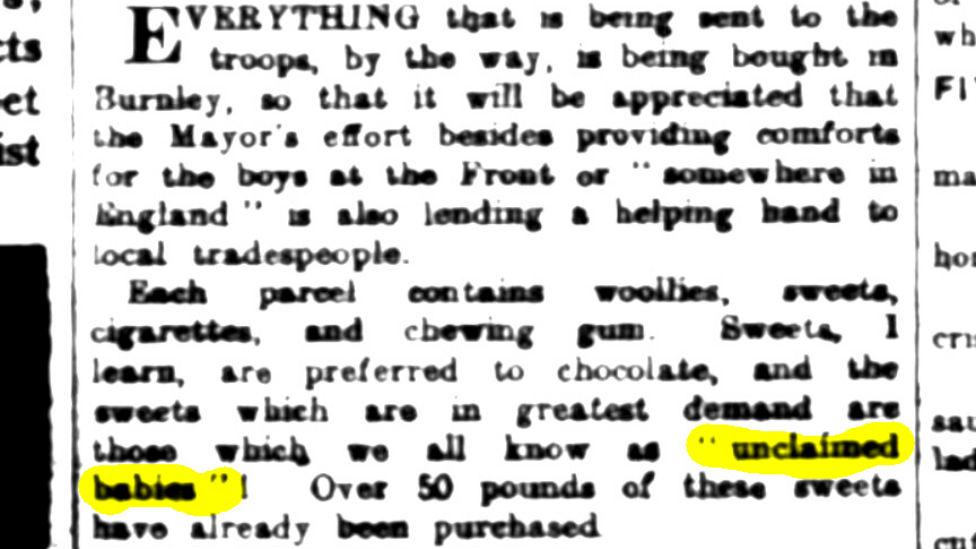
"It looks as if jelly babies can be traced to the 1880s and Unclaimed Babies seem to be well known and associated with the Burnley area, so probably made by Thomas Fryer's of Nelson," he said.
"In 1885 for instance, Riches Confectionery of Duke St, London Bridge, were advertising a variety of baby-sweets including 'jelly babies'.
"They were described as 'already dressed' and at the high price of a farthing each, they must have been quite large."
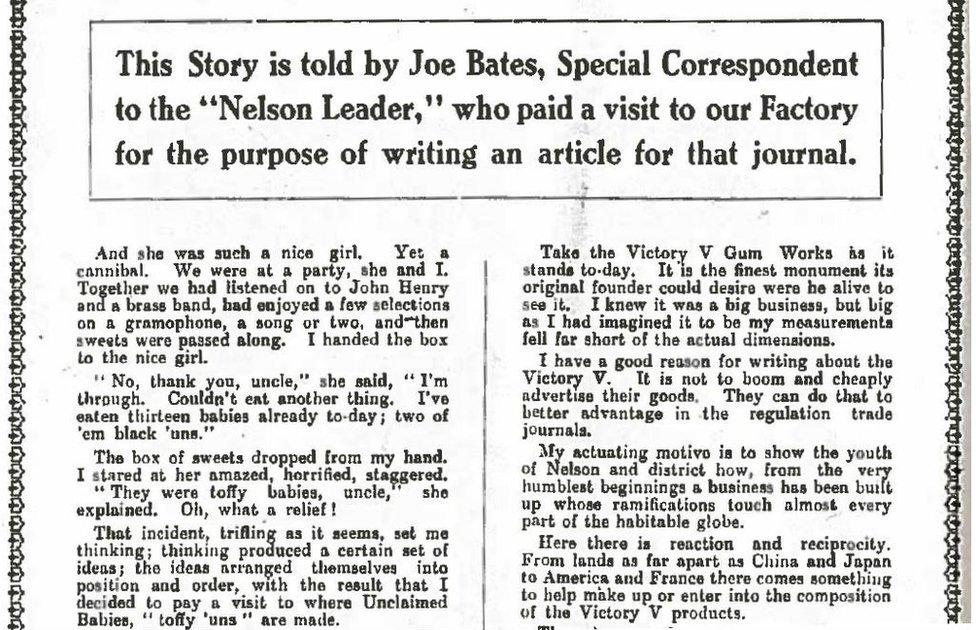
The Unclaimed Babies name was relatively short-lived and petered out when Bassett's of Sheffield began producing the novelty-shaped candy in 1918.
Archivists at Mondelez Ltd, which took over Cadbury in 2009, believe the sweets were rebranded as Peace Babies to mark the end of World War One, though the story has proved difficult to corroborate.
A shortage of raw materials halted production during World War Two - perhaps a fitting hiatus given the irony of their supposed name - and it wasn't until 1953 when they were relaunched as Jelly Babies that their popularity really took off.
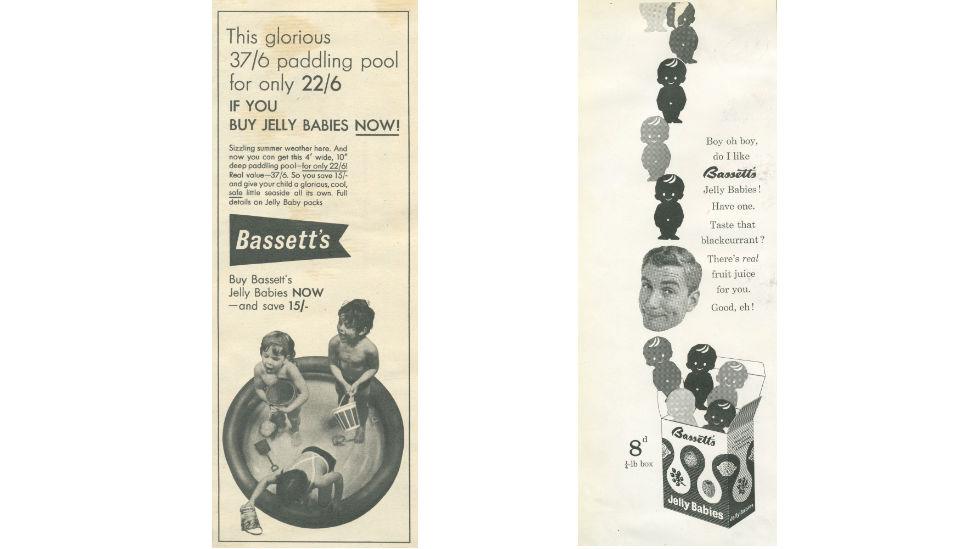
Adverts held by the History of Advertising Trust show how Jelly Babies were marketed in the 1950s and 60s
In the decades that followed, the sweets became a household name, helped possibly in part by an off-the-cuff remark reportedly made by George Harrison of The Beatles that they were his favourite sugary treat.
Fans of the band are thought to have pelted the mop-tops with the gummy sweets on at least one occasion at a concert in Cardiff.
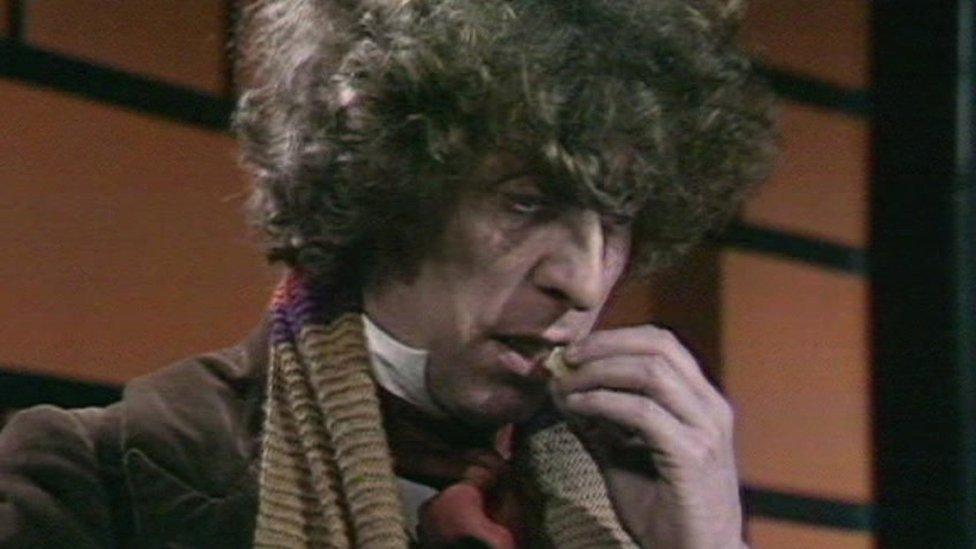
The Doctor was partial to a handful of Jelly Babies
Tom Baker's Doctor Who also played a part in giving them pop culture kudos with his sweet-toothed obsession for the jellied sweet, which he often dished out to help defuse tricky situations.
It would be another 40 years before the Jelly Baby was treated to yet another makeover, when Bassett's was taken over by Cadbury-Schweppes in 1989.
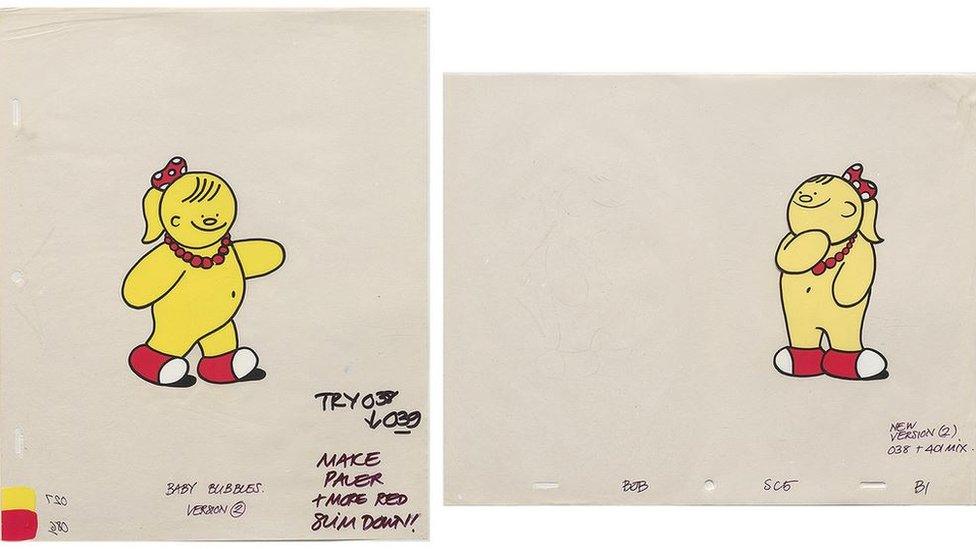
Animators working on Bubbles were told to slim the character down and make her less bright
This ushered in a new era for the sweet, which saw each baby given a name and their personalities brought to life at the hands of a team of animators.
Brilliant, Bubbles, Baby Bonny, Bigheart and Bumper entered the world of music and television when they appeared in two commercials produced in the 1990s.
Sketches and other creations by one of the artists, Bob Godfrey, feature in an archive of his work at the University of the Creative Arts.

Packaging for Bassett's Jelly Babies has changed over the course of its history
Rebekah Taylor, from the archive, said: "It's incredible to see the work that goes into that kind of material, seeing the mind in motion and everything you have to consider, like the colours.
"You're creating things you don't necessarily think about when you're picking it up and eating it, so it's fascinating."
Though their marketing campaign has certainly changed over the years, the fundamental characteristics of the Jelly Baby have stayed the same for more than a century.
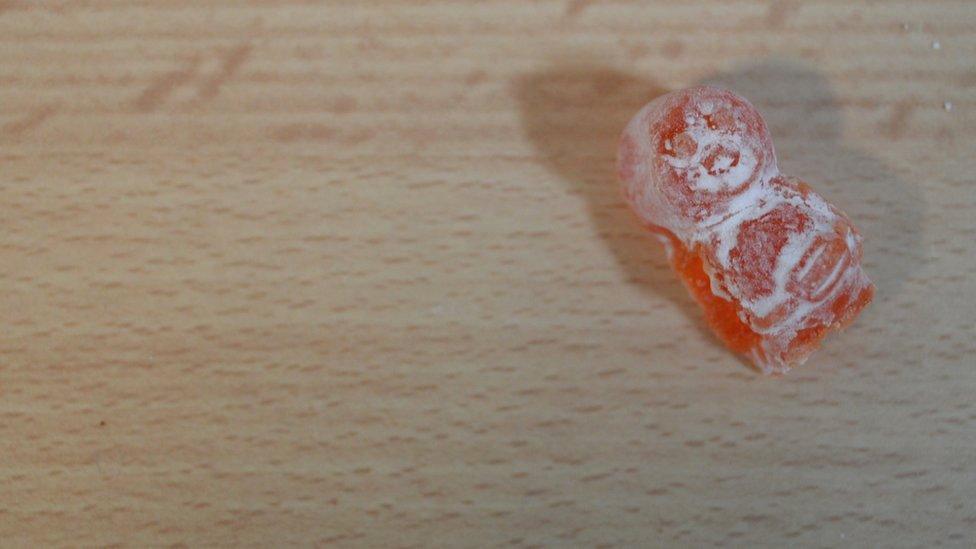
The Jelly Baby's success could be down to the appeal of playing with your food
Perhaps the secret to its sweet success lies somewhere between novelty and nostalgia.
"If you bite the head off a Jelly Baby it makes you like this giant, like a cannibal," said Mr Richardson.
"Others like to suck the Jelly Baby whole, so your mouth turns into an acid bath, some like to nibble around the outside, eating the arms and the legs.
"It's grotesque, but it allows you to regress and do things you wouldn't do in real life. It's sort of the fun of sweets, it's one of the few things you eat where it's acceptable to play with your food."
- Published10 November 2014
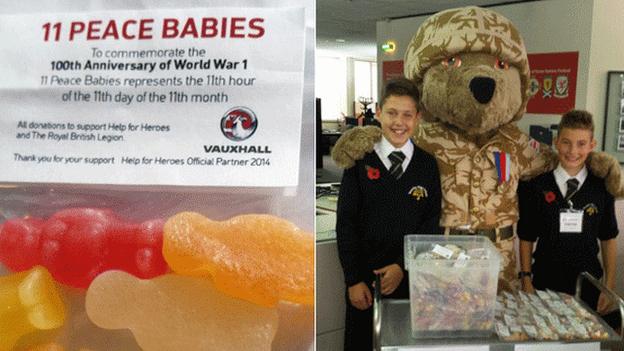
- Published18 August 2014
